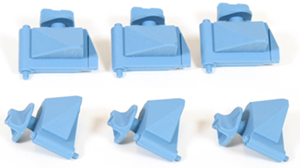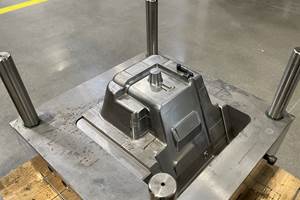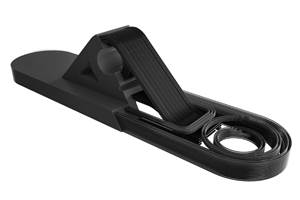Get Ready for an Explosion in Additive Manufacturing
From the Editor
If you want very small production runs, or to do more of your own mold building, ‘AM’ might be for you.
We’ve spotted repeated signs of it—and reported on it—for the past several years. The it I’m referring to is additive manufacturing (AM), sometimes called 3D printing, or what old-timers like yours truly used to know as rapid prototyping.
Except it’s not just for prototyping anymore. It’s also for making real production parts. Slowly, yes, compared with injection molding, but cost-effectively for very small volumes.
As my colleague Tony Deligio reported in his recent blog, GE Aviation recently decided to use additive manufacturing for all the fuel nozzles on its LEAP aircraft engines. Tony quotes Tim Caffrey, senior consultant at Wohlers Associates, Fort Collins, Colo., who referred to GE’s move in a blog posting of his own as “one of the most significant milestones in the history of the additive manufacturing industry.” Caffrey noted that a “major corporation publically declared its confidence in AM for a demanding production application in a hostile and critical operating environment.”
On its own website, General Electric itself states it is “using laser-powered 3D printers, 3D ‘inking’ and ‘painting’ machines, and other advanced manufacturing tools to make parts and products that were thought impossible to produce and which sometimes verge on art. We see advanced manufacturing as the next chapter in the industrial revolution.”
In our world of plastics processing, we’ve reported on quite a few molders who have entered the word of additive manufacturing, sometimes by buying AM service bureaus. We’ve also reported on how plastics materials are being developed to bring AM parts into more and more demanding applications. And at the K 2013 show in Dusseldorf last October, Arburg, one of the most-respected names in injection molding machinery, unveiled the Freeformer system, an inkjet-type 3D printer that builds up parts droplet by droplet in thin layers. It would not be far-fetched to predict that more injection machine builders will be introducing AM machines of their own in the coming years.
For molders, AM technology offers potential in two areas. First, it provides a new means to produce plastic parts that either have part geometries too complex for conventional molding or would be economically unfeasible to mold because of low volumes. In that regard, it is a complementary process to injection molding. Second, it offers molders an opportunity to build mold inserts and other tooling components on their own.
In a recent study, Dallas-based RNR Market Researchm) projected that demand for plastics processing machinery globally will increase 7% a year through 2017 to $37.6 billion. While the report projects that more injection molding machinery will be purchased than any other kind of processing equipment—accounting for 40% of overall new machinery sales—RNR’s research indicates that demand for AM technology “is expected to grow the fastest of any plastics processing equipment type” through 2017, albeit from a small current base.
We’ll be focusing more editorial resources on this important subject. We’ve added an Additive Manufacturing Zone to our website, where you’ll be able to quickly research all of the articles we’ve written on the subject from one location. And we’ll certainly be on top of the technology on display in this area at next year’s NPE show. Is this technology for you? Best to take a close look.
Related Content
Custom Molder Manages Growth on Several Fronts
Adding people, plants and machines, expanding capabilities in LSR, high-tonnage presses, automation and 3D printing—EVCO Plastics maintains momentum through challenging times.
Read MoreBusiness Slowing? There's Still Plenty of Stuff to Do
There are things you may have put off when you were occupied with shipping parts to customers. Maybe it’s time to put some of them on the front burner.
Read MoreDaimler, OMIC Evaluate Wire-Fed DED for Moldmaking
3D printing a core and cavity on machine from Gefertec, followed by machining, allowed for a complete mold tool to be produced in three days.
Read MoreAdditive Fusion Technology Optimizes Composite Structures for Demanding Applications
9T Labs continues to enhance the efficiency of its technology, which produces composite parts with intentionally oriented fibers.
Read MoreRead Next
How Polymer Melts in Single-Screw Extruders
Understanding how polymer melts in a single-screw extruder could help you optimize your screw design to eliminate defect-causing solid polymer fragments.
Read MorePeople 4.0 – How to Get Buy-In from Your Staff for Industry 4.0 Systems
Implementing a production monitoring system as the foundation of a ‘smart factory’ is about integrating people with new technology as much as it is about integrating machines and computers. Here are tips from a company that has gone through the process.
Read More





















